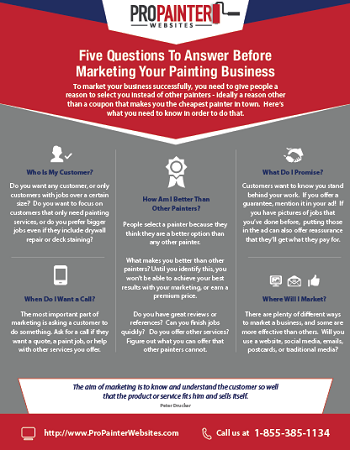Seasonal Factors In Business Exterior Painting: Key Insights You Must Know
Seasonal Factors In Business Exterior Painting: Key Insights You Must Know
Blog Article
house painters indianapolis -McLamb Browne
When you're planning a commercial exterior painting project, seasonal variables can make or break your results. You'll want to take into consideration how temperature and moisture influence paint application and drying times. Picking the appropriate period can ensure your paint sticks appropriately and lasts much longer. But which seasons are really the very best for this sort of work? Allow's explore the crucial elements that can affect your task's success.
The Impact of Temperature on Paint Application
When you're intending a commercial outside painting task, the temperature level can dramatically impact exactly how well the paint sticks and dries out.
Ideally, you wish to repaint when temperature levels range in between 50 ° F and 85 ° F. If it's too cold, the paint might not heal appropriately, causing issues like peeling or cracking.
On the other hand, if it's also hot, the paint can dry out as well quickly, protecting against proper attachment and resulting in an unequal finish.
You must likewise think about the moment of day; early morning or late afternoon provides cooler temperature levels, which can be extra desirable.
Always examine the maker's referrals for the particular paint you're using, as they typically supply advice on the ideal temperature level array for optimum outcomes.
Moisture and Its Impact on Drying Times
Temperature level isn't the only ecological aspect that influences your industrial external paint project; humidity plays a significant role too. High humidity levels can decrease drying out times substantially, impacting the general quality of your paint job.
When the air is saturated with moisture, the paint takes longer to cure, which can bring about issues like bad adhesion and a higher risk of mildew development. If you're painting on an especially damp day, be prepared for extended wait times in between layers.
It's vital to monitor regional weather conditions and plan appropriately. Ideally, go for humidity levels between 40% and 70% for optimum drying.
Maintaining these factors in mind guarantees your project stays on track and delivers a lasting finish.
Best Seasons for Commercial Exterior Painting Projects
What's the best time of year for your industrial external paint projects?
Springtime and early autumn are normally your best bets. During these periods, temperatures are mild, and moisture degrees are commonly lower, creating excellent conditions for paint application and drying out.
Stay clear of summertime's intense heat, which can create paint to completely dry too swiftly, leading to inadequate attachment and coating. In a similar way, winter months's chilly temperatures can prevent proper drying out and treating, taking the chance of the longevity of your paint work.
Aim for days with temperature levels between 50 ° F and 85 ° F for optimum outcomes. Remember to inspect https://indoor-painters-near-me09764.blogthisbiz.com/41176655/employee-specialist-painters-to-transform-your-home-s-exterior-and-delight-in-the-excellent-results-that-will-influence-you-to-look-for-further-enhancements for rainfall, as damp conditions can destroy your task.
why not check here around these aspects guarantees your paint project runs efficiently and lasts longer.
Final thought
To conclude, planning your business external paint projects around seasonal factors to consider can make a significant difference in the outcome. By scheduling work throughout the ideal temperature levels and moisture degrees, you'll guarantee much better bond and drying out times. Keep in mind to keep an eye on regional weather prediction and choose the correct time of year-- spring and very early loss are your best bets. Taking these steps will help you achieve a durable and professional coating that lasts.
